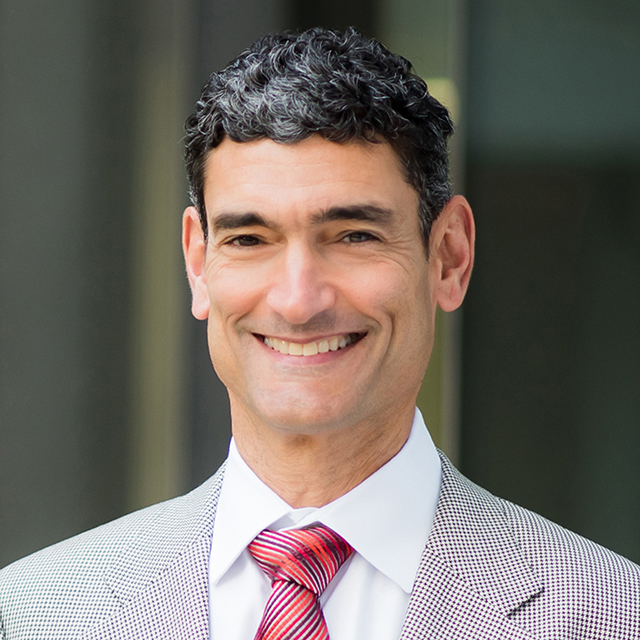An electrophysiology (EP) study and catheter ablation procedure is performed to evaluate and treat cardiac arrhythmias, or abnormal heart rhythms. Abnormal heart rhythms can occur in children, teens and young adults with or without congenital heart disease. In those with congenital heart disease, arrhythmias usually occur after surgical repair.
The EP study and catheter ablation procedure is performed in a special hospital room called an electrophysiology (EP) lab. Most patients go home on the same day as the procedure, but an overnight stay in the hospital may be necessary for some patients.
Before the procedure
A doctor or nurse practitioner will review your child's medical history and will explain the procedure in detail, including the benefits and potential risks. The provider will also discuss the kind of sedation that will be given to your child. Usually, general anesthesia is recommended. If anesthesia is used, you and your child will meet with an anesthesiologist before the procedure.
Be sure to ask any questions you may have. You will be asked to sign a written consent. It is standard hospital policy to perform a pregnancy test for all females over the age of 10 years who are having a procedure that may involve the use of X-ray.
Aspirin and medications
Starting three days before the procedure, please give your child aspirin every day. Tylenol does not have the same effect and cannot be used in place of aspirin.
The dosage varies depending on your child's weight:
- Children weighing less than 40 pounds should be given half of a baby aspirin tablet daily. Each whole tablet contains 81 milligrams. Give half of that, or 40.5 milligrams. Any brand is fine, including the flavored, chewable type.
- Children weighing 40 to 79 pounds should be given one baby aspirin (81 milligrams) daily.
- Children weighing 80 pounds or more should be given two baby aspirins, each 81 milligrams, for a total daily dose of 162 milligrams.
If your child is allergic to aspirin or appears to have a cold, the flu or chicken pox, do not give aspirin. Instead, please call your child's doctor or nurse practitioner.
If your child is currently taking medications to treat an abnormal heart rhythm, we will ask you to stop giving your child these medications three to five days before the procedure. Your doctor or the nurse practitioner will discuss this with you.
Fasting
Your child should not eat or drink anything, including water, for eight hours before the procedure. This usually means that your child should not eat or drink anything after midnight the night before the procedure.
During the procedure
The procedure is performed in a room called an EP lab. The lab is equipped with computers and monitors to record the heart rate, blood pressure and oxygen levels. We sometimes use X-ray and other equipment to help guide the catheters, which are thin flexible tubes, into the heart. The amount of X-ray exposure is usually very small and we use some newer techniques to help minimize the exposure.
Typically, the team includes one or two doctors, an anesthesiologist, one or two nurses and a technician.
On the day of the procedure, you and your child will check in at the surgical waiting area. You will then go to a nearby pre-procedure holding area before coming to the EP lab. Parents may accompany the patient to the EP lab and stay with their child until the sedation takes effect. During the procedure, we will provide you with a pager. We will contact you on your mobile phone or the pager for updates.
Your child will have an intravenous (IV) line inserted at the beginning of the procedure. We will use this IV to give sedation before and throughout the procedure. This will ensure your child is comfortable.
Once the monitors are applied and the sedation has taken effect, the nurse will clean and, if necessary, shave the area where the catheters will be inserted. Your child will be covered with a sterile sheet from chin to toe. Catheters are most commonly inserted in the blood vessels in the groin area, and sometimes in the neck blood vessel. Catheters are the thin tubes that record electrical signals and help us to study the heart's electrical system and the abnormal heart rhythm.
During the test, we will stimulate your child's heart to create the abnormal heart rhythm. With the use of catheters, we will locate the extra pathway or focus. This is called mapping. After a map has been created, we are ready to perform an ablation.
During the ablation, we deliver radiofrequency (RF) energy or cryoenergy through a catheter that is in contact with the extra pathway or focus. The tip of the catheter heats up (RF) or cools down (cryoenergy) and destroys the small area of abnormal electrical tissue.
After the procedure
The EP study and ablation procedure will take several hours. We will contact you when we are finished and your child's doctor will meet with you to discuss the results of the procedure.
Your child will then be transported to the recovery room for four to six hours to allow the groin area to heal.
Many children are hungry after the procedure. When they are fully awake, they may drink liquids if they aren't nauseated. If liquid is tolerated, they may then eat.
Your child may notice some tenderness in the groin or neck area once the local anesthetic has worn off. This can be treated with Tylenol or Advil. There may be some bruising in the area, which will resolve over the next few days.
Returning home
Typically, your child will leave the hospital within 24 hours. Once home, most children return to normal daily activities, including school, within two to three days following the procedure. Strenuous activities can usually be resumed one week following the procedure.
Please call your child's doctor or the nurse practitioner if you notice anything unusual after you return home. Please call immediately if your child experiences any of the following:
- Dizziness or near-fainting
- Rapid heartbeat
- Shortness of breath or difficulty breathing
- Blood leaking from the groin or neck where the catheters were placed. If this occurs, apply firm, steady pressure with two fingers or the heel of your hand to the groin or two fingers to the neck.
Contact us
If you have any questions, contact the UCSF Pediatric Heart Center at (415) 353-2008.


































